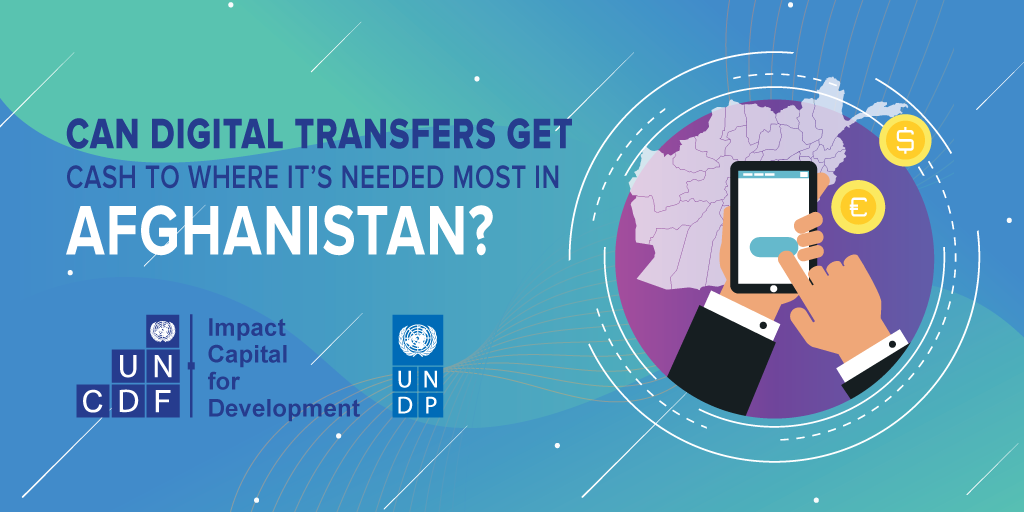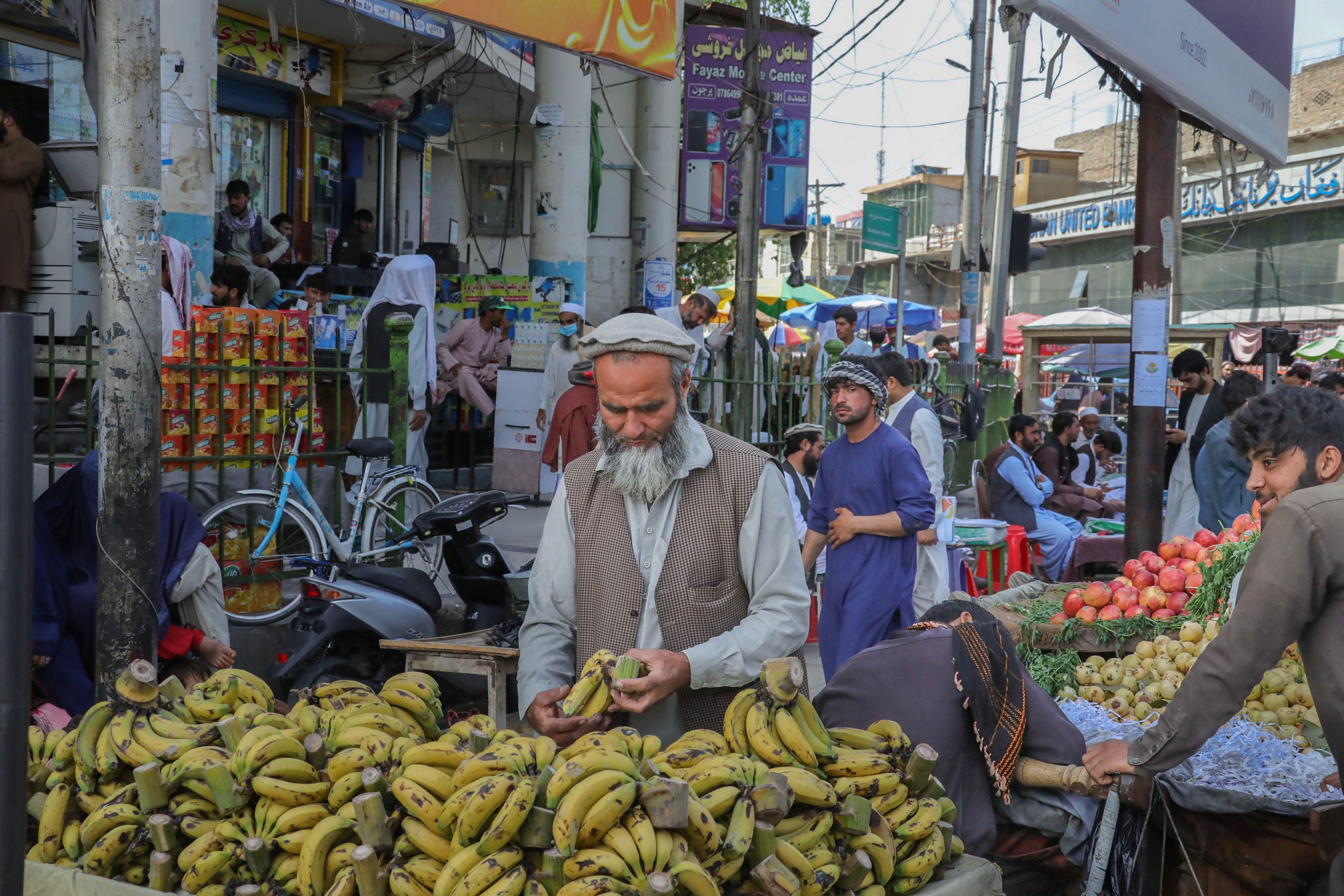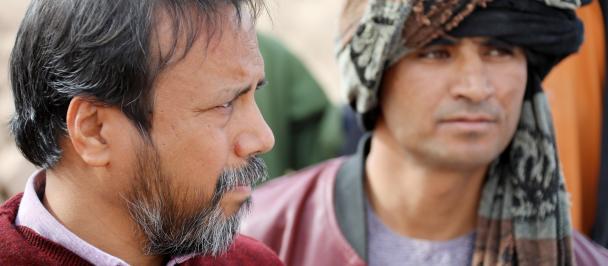Digitizing Aid in Afghanistan: Overcoming Challenges and Harnessing Opportunities in a Time of Crisis
Can digital transfers get cash to where it’s needed most in Afghanistan?
July 13, 2023

By Maria Perdomo, Regional Coordinator for Asia, UNCDF and Surayo Buzurukova, Deputy Resident Representative for Programme, UNDP Afghanistan
The political events of August 2021 triggered a severe economic crisis in Afghanistan. The economic situation continues to spiral. The gross domestic product (GDP) is estimated to have further declined by 3.6 percent in 2022 after the 20.7 contraction in 2021. With a population estimated by the UN at about 40 million and GDP of US$14.3 billion in 2021, Afghanistan is among the countries with the lowest per capita income in the world (UNDP, 2023)
Women and girls have been hit the hardest. They are more likely to go to bed hungry compared to boys and men (UNDP, 2022). They have also been banned from education and work and had their movement severely restricted, limiting also their access to all forms of aid, including emergency cash transfers.
With so many people in critical need, cash transfers are essential to prevent hunger, help local economy survive and provide access to basic services like education and healthcare. But their effectiveness depends on the speed, efficiency, and transparency of distribution systems.
At present, 70 percent of humanitarian organisations use hawalas, a 200-year-old honour-based network of money transfers (Norwegian Refugee Council, 2022). This is significantly more expensive and riskier than formal banking systems for both beneficiaries and aid organizations. Digital payment services could offer a better solution but they currently reach less than one percent of the population (World Bank 2022).
Improving the reach and effectiveness of digital transfer systems
Several crises around the world have accelerated the uptake of digital payments. At the beginning of 2014’s Ebola crisis in Sierra Leone, less than five percent of the population owned a mobile money account. This increased to 11 percent by 2017 (World Bank, 2017). More recently, COVID-19 pushed governments around the world to use mobile wallets for emergency cash payments to citizens.
Here in Afghanistan, UNDP and the UN Capital Development Fund (UNCDF) joined forces in 2021 to test the shift from cash to digital transfers, inspire NGOs and other actors to move to digital payments and encourage small businesses to make digital payments possible even in remoter areas.
The initiative was successfully completed with seven international NGOs participating in UNDP’s ABADEI programme, namely Care International, Norwegian Church Aid, Danish Refugee Council, Islamic Relief Worldwide, Swedish Committee for Afghanistan, ActionAid and Action Against Hunger. These seven NGOs received support to:
Evaluate technical proposals from financial services providers (FSPs), negotiate transfer costs and select the best delivery channels and digital payment solutions
Manage end-to-end cash disbursement via online portals and monitor cash disbursements in real-time
Reduce the risk of fraud through two-factor user authentication at cash-out points and field-based monitoring
Train cash recipients in digital and financial skills
Six digital payment solutions were tested to better understand which ones work best for beneficiaries and INGOs – mobile wallets, debit cards, e-vouchers, virtual accounts, QR-Codes and AfPay cards. The digital financial services were provided by seven FSPs, including two banks, two payment institutions and three mobile money operators.
The FSPs have digitally disbursed over $1,000,000 to more than 15,000 beneficiaries, including almost 3,000 women, reduced transaction processing times from 7 days to 48 hours, and saved almost 30 percent in costs of cash transfers, compared to the delivery channels INGOs were using previously.
But there are considerable obstacles to scaling up digital payments that the pilot tried to address. Below are some lessons learned and recommendations:

Empowering Change: Afghan Entrepreneurs Harness the Power of Digital Transfers in Challenging Times
|
|
Limited financial and digital literacy and awareness of mobile money services
In addition to trainings, the simple QR solution used by one of the FSPs helped address this obstacle (see box).Limited network coverage in some districts
This caused delays in processing transactions and offline digital solutions need to be further explored.
Resistance of INGOs to adopt digital payment solutions
Due to a lack of confidence in the digitalization of the formal financial sector, some INGOs were initially hesitant to use digital means for the distribution of emergency cash transfers. The INGOs were sensitized and given support through the process to overcome this challenge.
Lack of interoperability across FSPs
In the absence of interoperability across FSPs, beneficiaries of the pilot had to receive transfers and cash them out with the same FSP. In countries where interoperability exists, FSPs can share agents, improving access and affordability for users of digital payments.
Some of these challenges are particularly acute for women, including limited financial and digital knowledge and access to mobile phones and IDs. Equally important, even when a payment system is interoperable, it must include institutions that are more likely to serve women (i.e. microfinance institutions).
Where do we go from here?
Availability of cash is critical for building resilience and restoring local economic activity throughout the country. As the results of this initiative with six FSPs have shown, digitizing payments not only adds transparency and safety to the payments being disbursed, it significantly reduces the cost of disbursements. Digital payments also increased the availability of money to beneficiaries participating in the pilot by reducing the time and effort recipients need to access their payments.
To develop a digital payment ecosystem inclusive of all (in particular women and those living in the last mile) and capable of efficiently distributing cash in Afghanistan, it will be necessary to take a comprehensive approach that addresses multiple dimensions. The first dimension concerns the constraints digital payment infrastructure may face such as network coverage, agent networks, interoperability and accessibility to mobile devices. The second involves the capacity and incentives for providers to innovate and develop new partnerships to develop mobile money services and microfinance services that cater to the specific needs and constraints of clients in particular women. Finally and equally important, to ensure these services are used, it is essential that stakeholders INGOs and providers invest in building the digital and financial capabilities of the Afghan people.
Discover how digital transfers are revolutionizing humanitarian aid in Afghanistan, despite significant challenges. Through innovation, collaboration, and dedication, we're advancing towards a future where aid is accessible, efficient, and inclusive - especially for women and marginalized groups.

 Locations
Locations



